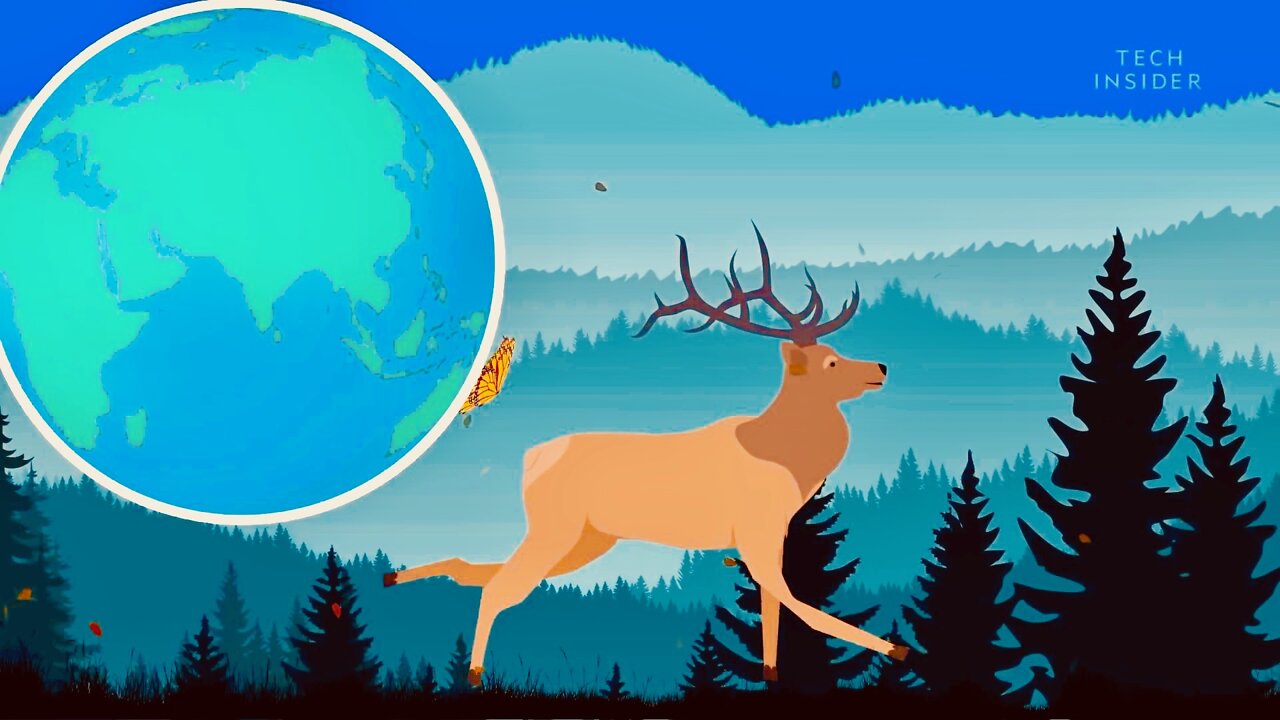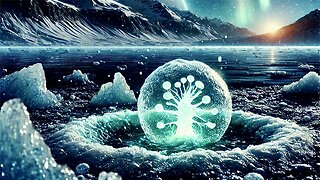Premium Only Content

Animals that Travel the Longest Distances - Great Animation
10 Amazingly Long Animal Migrations - These creatures walk, swim, or fly in record-setting fashion. --- 1. Gray whales ---In early April, a team of marine biologists recorded the longest mammal migration in history. The discovery was made by tracking seven Pacific gray whales, a gravely endangered species about which little is known. Only three of the seven tags lasted long enough for scientists to track, but that was enough to yield incredible findings. A 9-year-old female dubbed Varvara swam across the Pacific Ocean, from Sakhalin Island in Russia to Baja, Mexico, and back. That’s a 14,000-mile journey over a relatively quick 172 days.
2. Humpback whales
These guys are also known to really go the distance. The annual migration is more than 5000 miles, swimming at speeds between 3 and 9 mph. After that, a vacation is pretty well deserved. Props to the elephant seal as well, another marine mammal that travels thousands of miles annually on not one, but two migratory trips.
3. Birds
Whales are top dog in the mammal migration world, but they’ve got nothing on birds. The arctic tern—a small white seabird with a black head and orange beak—jets back and forth between Greenland and Antarctica, traveling about 44,000 miles in the process. It’s not a bad deal for the tiny fliers—the travel gets them two summers a year and more daylight than any other animal on earth.
Sooty shearwaters also log an impressive amount of miles (just over 40,000). And let’s not forget the 4000 other bird species that regularly migrate. After all, birds gotta fly.
4. Leatherback Sea Turtles
Sea turtles are known for their longevity, but they also do a lot of moving around during their many years on the planet. Leatherback turtles in particular travel more than 10,000 miles across the Pacific Ocean annually and are able to find their way back to the very beach where they were born in order to continue the circle of life.
5. Salmon
Salmon get migration points for their sheer determination. They’re born in freshwater, but eventually make their way to the sea where they live until it’s time to reproduce. Like turtles, the salmon travel back to the place they were born in order to spawn—except for them, it’s an exceedingly arduous process. The only way to get back upstream is to swim … upstream. The fish fight their way through seawater and freshwater and navigate various channels just to get there. Was that a little too “When I was your age?” Well, after they travel those thousands of miles, using the earth’s magnetic field to find their natal stream, they do their part to continue the species and then they die. So you know, they’re allowed to vent.
6. Caribou
Of the land-bound mammals, the North American caribou (a.k.a. reindeer) is surprisingly the most mobile, traveling up to 3000 miles every year during migration. The herds travel north in the summer to feast on the blossoming tundra and turn back when the snow returns in the winter.
7. Wildebeest
In Africa, migrating wildebeest know there’s strength in numbers. They travel close to 1000 miles in a herd of millions along with hundreds of thousands of zebra and gazelles as part of the largest mammal migration in the world. Their journey offers a sight unlike any other, as the crowd makes its way across the plains following a trail of phosphorous-rich grass (7000 tons are consumed by the time it’s all over) on their way to rainier, richer pastures in the north.
8. Dragonflies
Dragonflies embark on the longest of all insect migration paths, though scientists know almost nothing about why, how, or where they’re migrating to. In 2009, scientist Charles Anderson observed that dragonflies were soaring from India to Africa and back, a journey that takes more than a couple generations of dragonflies. The wandering gliders were following the monsoon rains, traveling around 10,000 miles in all. Only some species of the insect voyage in such epic fashion, and naturalists are keeping an eye to sky, trying to piece together the mystery of their migration patterns.
9. Monarch butterflies
If not the record-holder for distance in the migrating insect world, monarchs can at least claim the title of most beautiful. Swarms of the orange-winged gliders travel south for the winter, just like birds. The eastern population of North American monarchs travels upwards of 3000 miles, using air currents and earth’s magnetic field to guide them as far as Mexico.
10. Zooplankton
These surface-dwellers are drifters in nature, but they put some pep in their step as the sun rises and sets. Theirs is called diel vertical migration, which is an up-and-down pattern of movement. During the day, zooplankton hang in the deep water to avoid predators. At night, they pop up to feed on the phytoplanktons that need sunlight to photosynthesize.
Music: Uncle Festus by Dhruva Aliman
Amazon- https://amzn.to/2Mgr7pg
https://music.apple.com/us/artist/dhruva-aliman/363563637
https://dhruvaaliman.bandcamp.com/album/the-wolf-and-the-river
http://www.dhruvaaliman.com/
Spotify - https://open.spotify.com/artist/5XiFCr9iBKE6Cupltgnlet
#migration
#animals
#nature
-
 48:29
48:29
Seeker Land
5 days agoSnowball Earth ~ The Cryogenian Ice Age That Birthed Complex Life On Earth
1161 -
 LIVE
LIVE
Dr Disrespect
5 hours ago🔴LIVE - DR DISRESPECT - WARZONE - CRAZY CHALLENGES
4,195 watching -
 16:21
16:21
China Uncensored
2 hours agoCan Anything Stop the Tiktok Ban?
2.43K -
 7:08
7:08
Guns & Gadgets 2nd Amendment News
6 hours agoTruckers Fight For National Reciprocity
2.45K4 -
 LIVE
LIVE
Scammer Payback
2 hours agoCalling Scammers Live
378 watching -
 43:49
43:49
Stephen Gardner
2 hours ago🔥Congress DROPS Bad News on Newsom and Biden!
18.6K13 -

Twins Pod
2 hours agoHe Left The RAP Industry To Make Christian Music! | Twins Pod - Episode 48 - Bryson Gray
21.8K4 -
 1:30:05
1:30:05
The Quartering
4 hours agoSupreme Court RULES On TikTok Ban, Kamala Harris At Rock Bottom & Brawls Break Out At Costco!
47.6K13 -
 1:36:11
1:36:11
Tucker Carlson
3 hours agoSean Davis: Trump Shooting Update, & the Real Reason Congress Refuses to Investigate
171K82 -
 2:55:32
2:55:32
The Dana Show with Dana Loesch
4 hours agoTHE END OF TIKTOK | The Dana Show LIVE On Rumble!
19.1K5